|
4t |
£2,616 |
£3,168 |
£2,078 |
£2,457 |
|
5tth |
£3,210 |
£3,010 |
£2,469 |
£2,379 |
|
6th |
£3,419 |
£2,852 |
£2,575 |
£2,306 |
|
7th |
£3,356 |
£2,710 |
£2,557 |
£2,248 |
|
8t |
£3,156 |
£2,552 |
£2,463 |
£2,154 |
|
9th |
£2,999 |
£2,459 |
£2,411 |
£2,068 |
|
Richest |
£2,670 |
£2,234 |
£2,242 |
£1,931 |
|
ALL |
£2,464 |
£2,879 |
1936 |
£2,278________ |
Figure . Comparing possible future reforms: removing interest subsidies
NPV total repayment
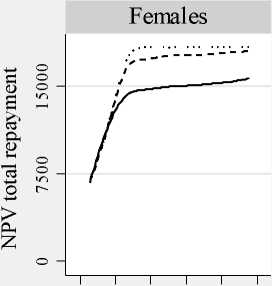
0 20 40 60 80 100
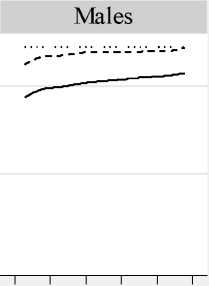
Subsidy as % of loan
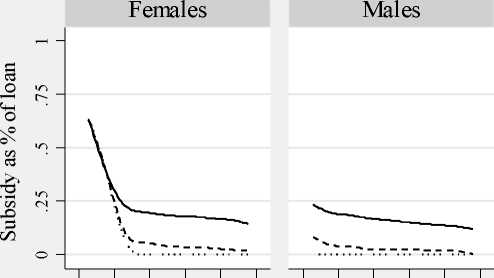
0 20 40 60 80 100 0 20 40 60 80 100 0 20 40 60 80 100
Years to repay loan
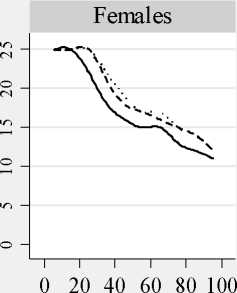
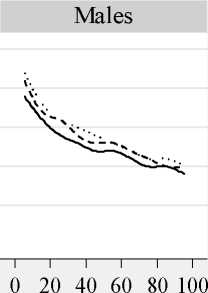
New system
NZ system
2.5% real int
Percentile of the lifetime earnings distribution
Other options for reducing the taxpayer cost of graduate loans would include
extending the length of time after which the loans are written off beyond 25 years, or
reducing the repayment threshold, for example by removing the default indexation
provision after 2010, so that its real value erodes over time.23 It should be noted that
23 The current system of up-rating the £15,000 threshold in line with inflation means that year on year
the system becomes less progressive for relatively low earners. This is because the threshold increases
at a relatively slower rate than earnings. So, each year fewer and fewer individuals have earnings below
the threshold, and therefore the subsidies to these individuals are lower. Indeed, considering the effects
of the reforms for graduates in 2009 rather than 2011, as in previous versions of this paper, we see that
the system is less progressive for the 2011 cohort of graduates for this reason. This is unlike the
situation in Australia for example, weher the threshold is set relative to average earnings to ensure
25
More intriguing information
1. The name is absent2. The name is absent
3. CAPACITAÇÃO GERENCIAL DE AGRICULTORES FAMILIARES: UMA PROPOSTA METODOLÓGICA DE EXTENSÃO RURAL
4. The name is absent
5. The name is absent
6. Banking Supervision in Integrated Financial Markets: Implications for the EU
7. The name is absent
8. QUEST II. A Multi-Country Business Cycle and Growth Model
9. The name is absent
10. Implementation of Rule Based Algorithm for Sandhi-Vicheda Of Compound Hindi Words